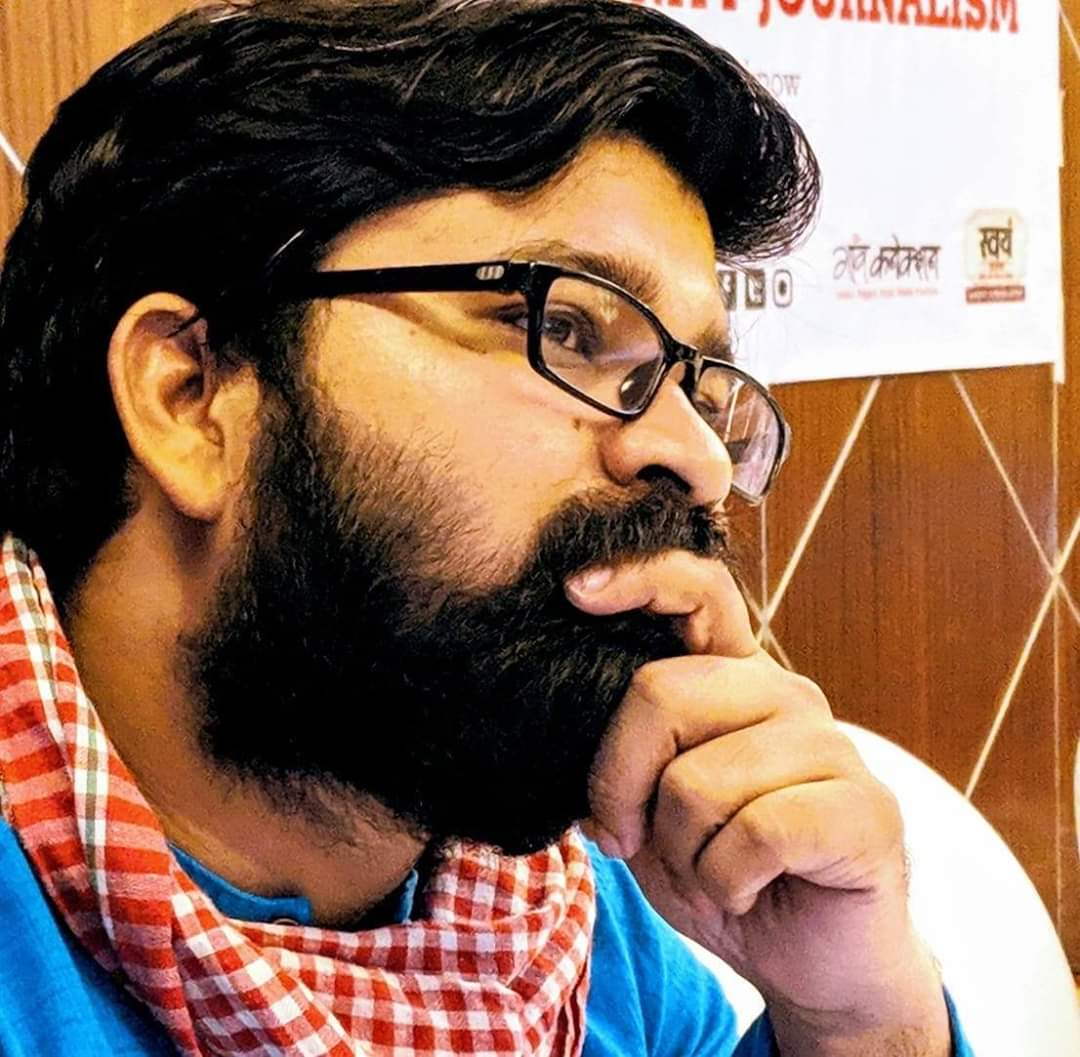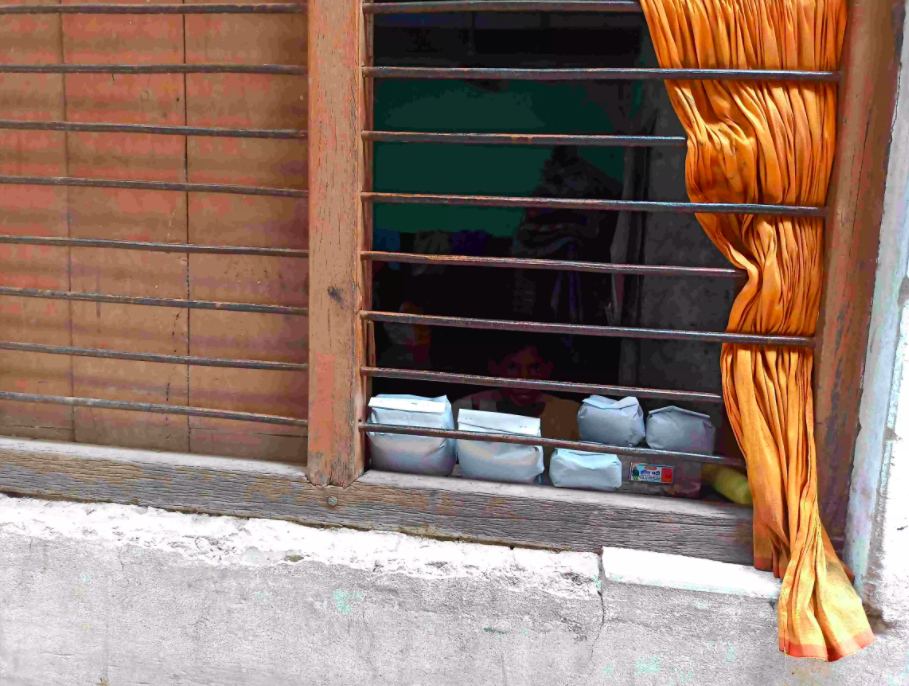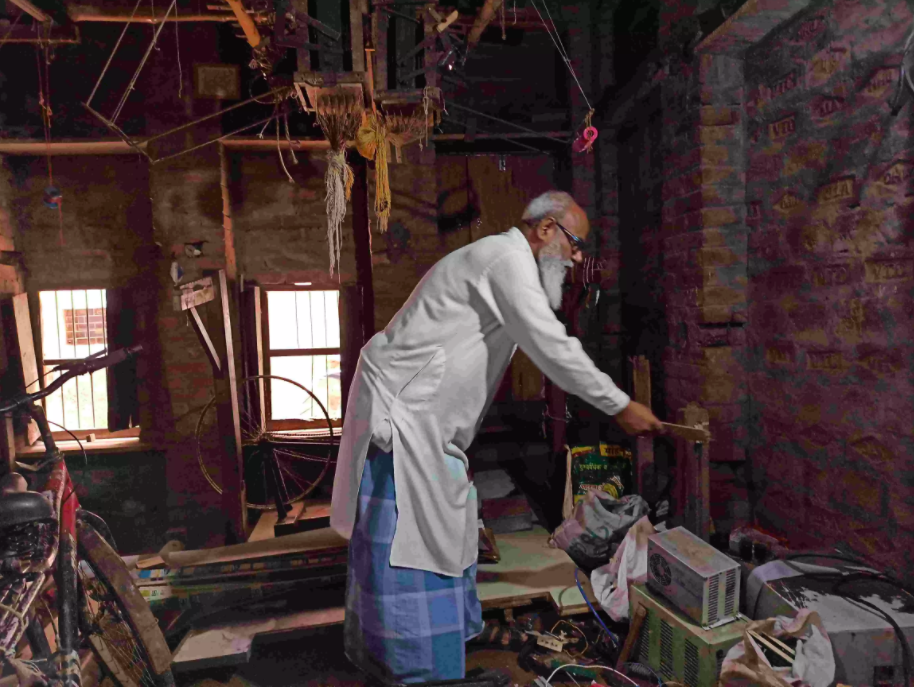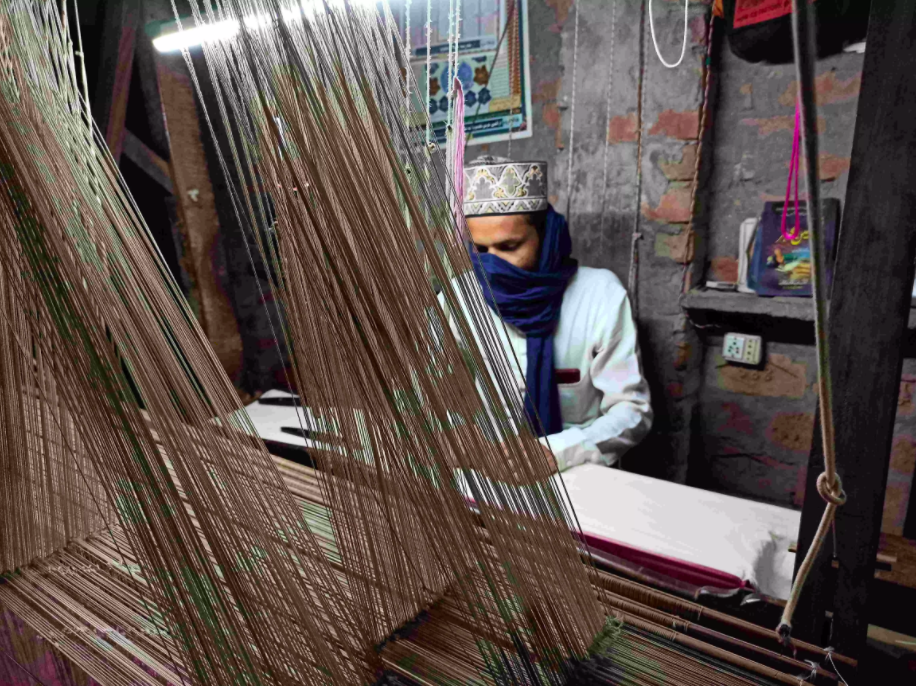Varanasi: COVID-19 lockdown shatters the livelihoods of handloom weavers and traders
The livelihoods of weavers of the iconic Banarasi sarees have been completely ruined by the COVID-19 lockdown. The poverty-stricken weavers are having to draw loans to provide for their families.

Not long ago, the narrow lanes of Sarainandan in Varanasi’s Sundarpur used to reverberate with the sound of looms at work. Now, eerie silence engulfs these lanes.
The weavers of the iconic Banarasi sarees have been facing a severe economic crisis due to the COVID-19 lockdown that lasted nearly three months, and the restrictions still in place in view of the pandemic.
The skilled hands used only to weave beautiful Banarasi sarees on handlooms (hand-operated looms) and power looms (electric looms) are now working with brick and mortar. The poverty-stricken weavers are having to sell their looms, pawn wife’s jewellery and draw loans to provide for their families.
Varanasi, also called Kashi and Banaras, is about 250 kilometres from Uttar Pradesh’s capital Lucknow. It is Prime Minister Narendra Modi’s parliamentary constituency and is famous all over the world for three things—the renowned ancient Hindu temple of Kashi Vishwanath (Lord Shiva), its ghats by the Ganga river and Banarasi sarees.
As this reporter walked through one of the lanes, he noticed some packets placed on a window sill. A seven-year-old child was sitting across the window. It is six-year-old Sufiyan’s house. He was selling tea leaves in those packets. Noticing the reporter, he promptly asked, “What will you take Bhaiyya (brother)?”
Sufiyan’s father Anees Ahmad had five handloom machines. In order to run the house, he had to sell three machines at a throwaway price. At the window of the handloom workshop, he has opened a tea-leaf shop that is manned by Sufiyan studying in Class I while he himself is working as a labourer.

“Abba goes to work and I sell tea here. I sometimes buy vegetables or a packet of masala from the money that comes from selling the tea leaves. Sometimes I also buy biscuits and chips,” Sufiyan told Gaon Connection.
“The lockdown has brought completely ruined our trade. A few weeks into the lockdown, we ran out of money for daily expenses. We are being given rice and wheat rations by the government but, that cannot be eaten alone,” Anees, Sufiyan’s father, told Gaon Connection. “I had to sell three out of my five handlooms. Installed at an expense of 50 thousand to two-lakh rupees, these looms fetched me only for Rs 15 – 20 thousand now. We are surviving using this money. My ailing wife’s treatment also required money,” he added.
“I have been weaving for more than 20 years. I set up the looms with the savings over the years. I gathered individual parts of these looms one-by-one and made five functional looms. It was heartbreaking to let go of them,” he sighed.
The annual turnover of Banarasi sarees is more than five billion rupees. About six lakh people are directly and indirectly engaged in this cottage industry. There are many areas in Varanasi like Saraiya, Jalalipura, Amarpur Batlohia, Koniya, Shakker Talab, Nakki Ghat, Jaitpura, Alaipura, Bari Bazaar, Peelikothi, Chittanpura, Kazisadullapura, Jamaluddinpura, Katehar, Khojapura, Kamalgadha, Puranapul, Baluabir, Nati Imli, where lakhs of weavers did Banarasi binkari (Banaras weave) but all of these areas are closed since the lockdown.
Mohammad Asif Ansari, 75, who has been a weaver for about 50 years, let Gaon Connection into his workshop littered with dismantled handloom machine parts. He was waiting for a scrap dealer. “I have never seen such a bad time. We were already poor but, the lockdown forced us to take up some other profession. So now, I am selling off my machine,” he said when asked why he had to sell his loom.

“The bills are going up. The previous governments gave subsidies to electricity. Not only has this government increased electricity charges, but GST has also been slapped over it, and now we struggle with coronavirus. The government did not bother to ask after us even once,” Asif said, in anger.
Before the lockdown, Naeem used to earn four to five hundred rupees a day weaving sarees on someone else’s power loom. His livelihood was destroyed. In May, he sold his wife’s earrings for six thousand rupees and is currently wandering in search of work.
“I have been jobless for four months,” he informed Gaon Connection, “I have the responsibility of a household of four. Our savings helped us sustain for two months. Then, I had to sell my wife’s earrings. I linger about in the market the whole day hoping to find some job but there is no work to be found,” he lamented.
“I am waiting for the situation to improve. I swear, I would go out and work in Mumbai or Delhi but won’t stay back to do this work (weaving) anymore,” Naeem shared his frustration.
Young Mohammad Javed has two handlooms lying idle. He has taken a loan of Rs. 35,000 from his relatives so far to pay for home expenses. He is unsure about its repayment. “I hoped for orders to resume after the lockdown was over but, there has been no work,” he sighed.

Gaon Connection asked whether he had received any help from the government besides ration. “Since the last three or four times, we only got some rice in the ration and you talk of additional help! We didn’t get a single rupee during this entire lockdown,” Naeem responded. “The government should give us something more than just rice. Those who are coming from outside may have gotten something but the locals, dying here out of hunger, are not getting anything,” he lamented.
Varanasi produces silk, cotton, Butidar, Jangla, Jamdani, Jamawar, cutwork, chiffon, Tanchhoi, Korangaja, muslin, Nilambari, Pitambari, Shwetambari and Raktambari sarees that are exported to countries including Sri Lanka, Switzerland, Canada, Mauritius, USA, Australia, Nepal.
Ashok Dhawan, the patron of Banaras Textile Industry Association and a trader of Banarasi Sarees, believes COVID-19 has pushed the trade to the brink of closure. “It will take us several years to recover from the damage that has been caused so far,” he told Gaon Connection.
“The weavers and traders are in grave distress. The government will have to take effective steps, at the earliest to save us and the trade,” he added.
Weaving is practiced in many other districts in UP including Mau, Bijnor, Azamgarh, Bhadohi, Mirzapur and Ghazipur. As per the Handloom Census held in the year 2009-10, 43 lakh people are involved in this trade in the country. Handloom work in India has declined sharply in the last decade whereas about 70 lakh people are involved in the power loom.

